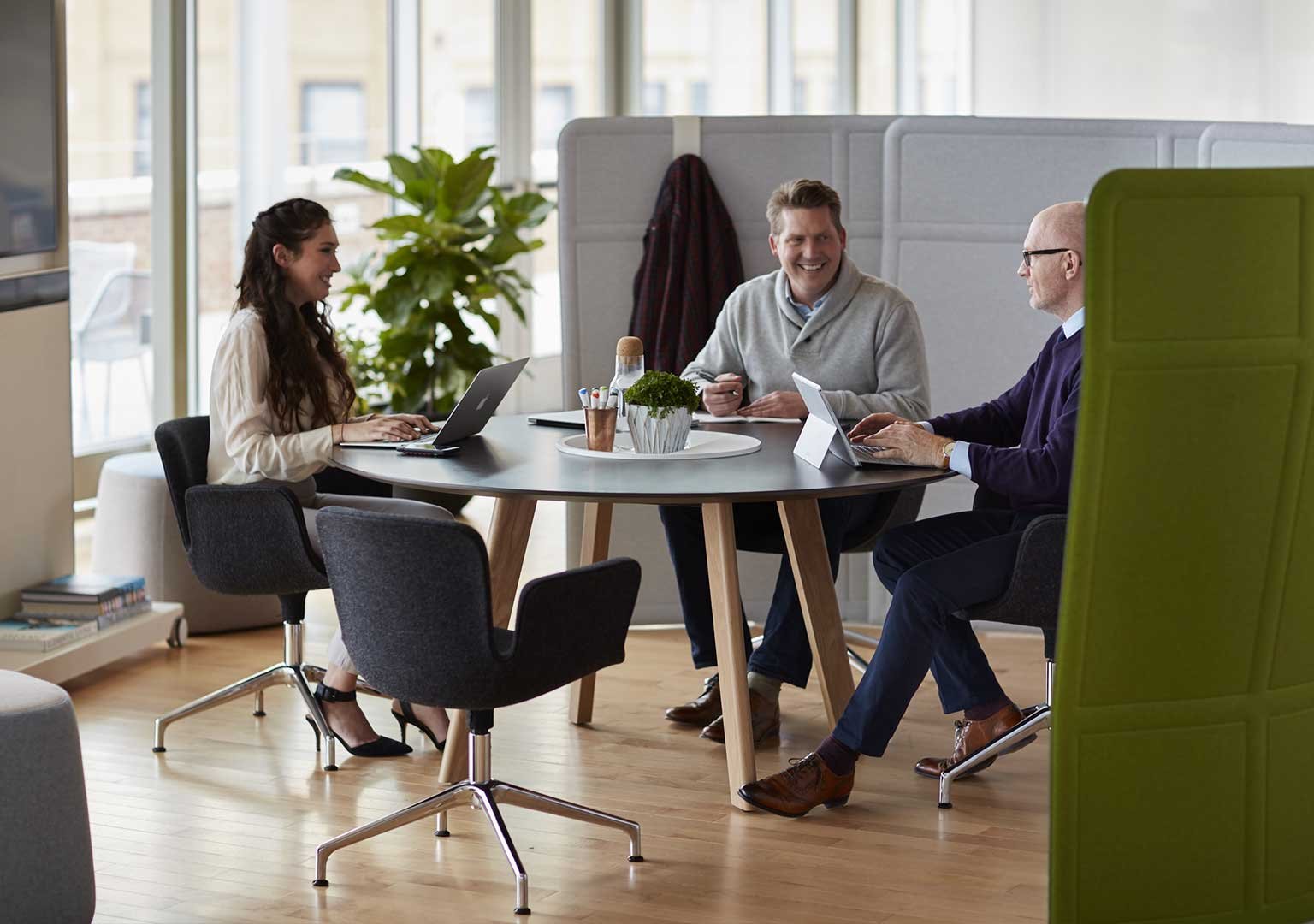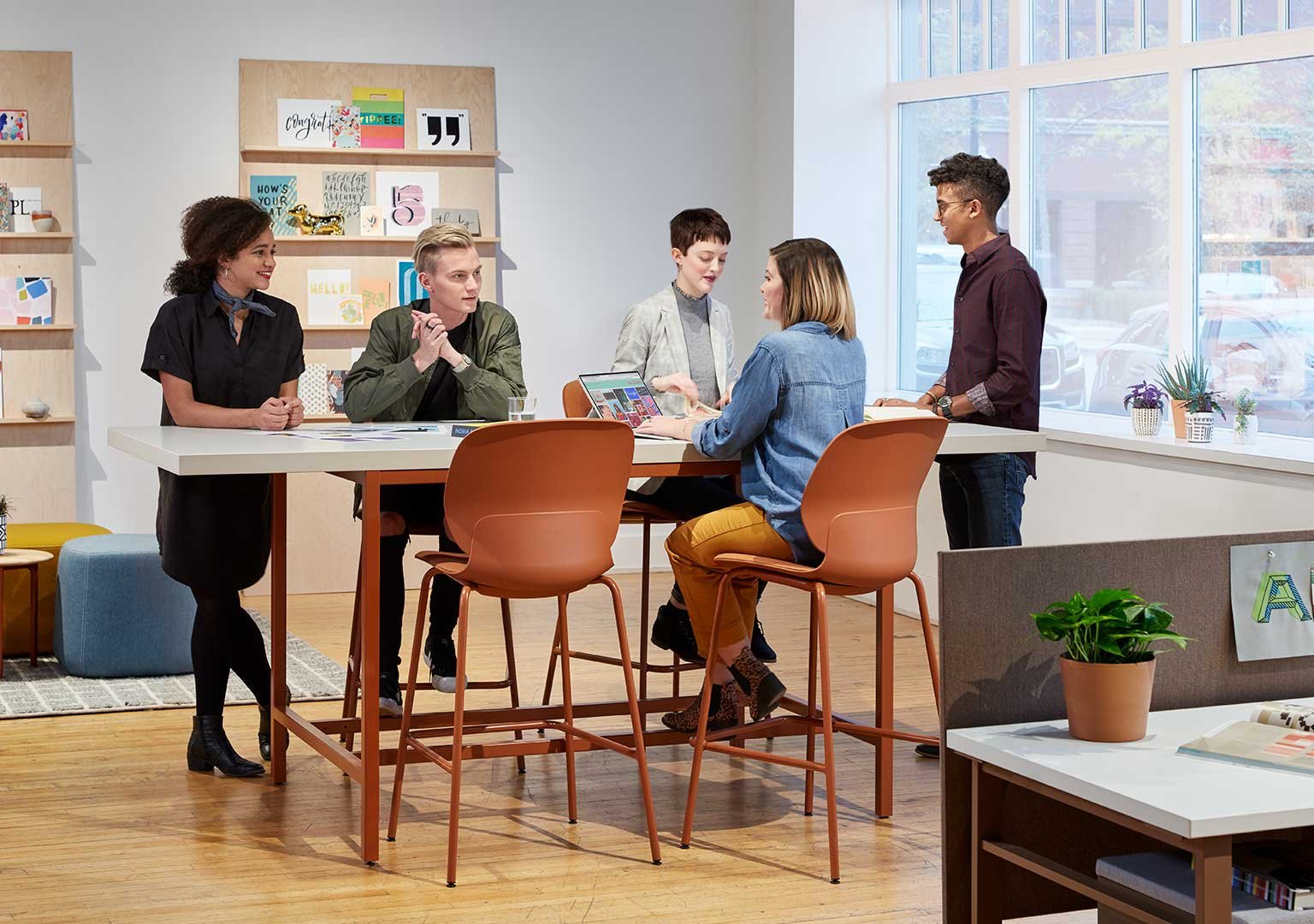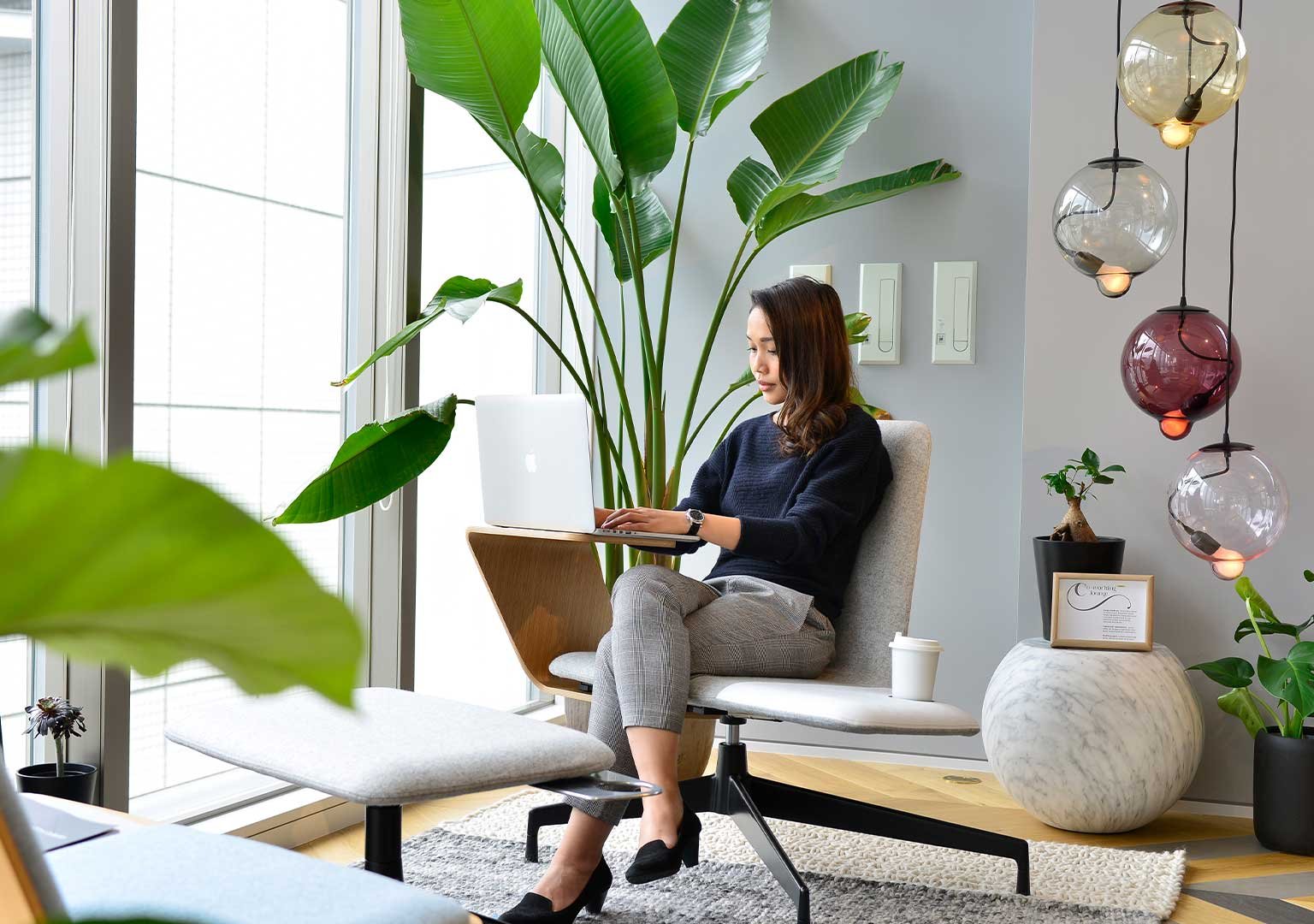Our working environment is evolving. Technology is developing at a rapid pace, people are starting their careers earlier and retiring later. No matter what stage they are in their lives, employees are demanding a flexible workspace to fit their working style.
As workplace designers, how can we capitalize on this multi-generational moment and create spaces that have meaning to all? By assessing the needs of the varied demographics and devising site-specific strategies to cater to those needs. In doing so, employees gain the freedom and flexibility they want while employers unleash human potential and increase productivity.
When developing a strategy for designing your physical space, the first step is understanding the five generations in the workforce and what they want out of their office.

Let’s Dive into Generation All
Traditionalists (born 1920 - 1945)
Our senior workforce. Or as we like to say, the wise ones of our society. While this group only makes up 2% of the workforce, with age comes experience, an invaluable asset to companies. When this group started their careers, they were welcomed to a sea of open floor-plan seating which gave way to cubicles and private offices. They clocked in, were held accountable if they logged overtime, and survived many booms and busts. They covet face time but nimbly pivoted to accommodate the ways of the internet. This independent group values flexibility, seeks efficiency, and takes pride in its entrepreneurial spirit. They can work autonomously and just as they flexed throughout the decades, they appreciate an adaptable work structure.
Baby Boomers (born 1945-1964)
A passionate group, making up nearly 25% of the workforce, that has had a similar experience with their “elders”. That is, they saw the boom of the cubicle farm, with and without pony walls, shifted from three martini lunches to email communications, and cut their chops putting in the hours. While they are independent and seek efficient solutions, they also gravitate towards personal development and value work-life balance. “Attaboys” are good but cash is king, after all, they worked through the ’80s. Today, the gold standard for this group is a flexible work structure where independent work and innovative thinking are acknowledged.
Gen X (born 1965-1980)
We have a feeling the phrase “work-life” balance originated from this group. Making up a third of the workforce, the X-ers were born with the internet. Fast communication is the norm. Waiting for snail mail isn’t an option. Policy and procedures aren’t “their thing” — to them, it lacks innovation and speed — their key drivers. They like company perks and won’t shy away from monetary awards. And since they can carry work in the palm of their hand, this group loves a flexible work structure. What they love even more is their freedom when not working.
Millennials (born 1980-1997)
Making up 35% of the workforce, this tech-savvy group started their careers when the internet became the way of the world, communal amenities, ping pong table included, were status quo, and their work was trust-based and results-oriented rather than the typical 9-to-5. This led to unhindered collaboration, access to data and more data, and a shift to finding meaning in work. While they like a relaxed work environment (suitable for hoodie wearing) with no concrete hierarchy, mentorship and a consistent feedback loop are key to engagement.
Gen Z (1997 - 2015)
With a global mindset that quickly adapts to rising technical shifts, this group comprises 5% of the workforce. They came into their careers with a wide variety of task-based settings for highly mobile teams. They crave in-person community building and appreciate co-working in mixed-use spaces. Transparency, authenticity, social responsibility, and flexibility drive them. Since this is our most inexperienced generation when it comes to the working world, this group can benefit from mentorship, coaching, and training opportunities.

So what does this all mean for companies?
Across generations, it’s evident that employee choice, and control over how, when and where folks work, plays a significant role in decisions. As such, companies need to champion choice and provide a work environment that cultivates various leadership styles, nurtures employee engagement, and supports organizational efficiency so that people, and the company, can thrive.
To accommodate five generations, the key is creating inspiring spaces where employees WANT to come into the office. This translates into space optimization and intentional design. That is, taking a holistic approach — overall layout, seat plans, desk and modular furniture options, colors, wayfinding, and at-home touches (lounge chairs, pantries, and amenities) — to workplace design, making sure all employees are heard and answered. This includes integrating adaptable areas, experimenting with textures and materials, establishing multiple spaces to conduct work, investing in good air quality, and weaving in biophilic design, such as natural light and living walls.

How We at Unisource Solutions Address 5G Workforce
We assess your workforce and develop activity profiles based on general personas, like the ones described, as well as individual personalities. We then devise a space plan where we right-size each designated area, balancing layout with furniture and material selections, and acoustic considerations. For us, the goal is to create “spaces that care" so everyone, from individuals to large teams, can have an enjoyable experience. Be it a place of solitude, like a phone booth, or a social lounge area situated in a sunlit corridor. The physical space then becomes a backdrop for technological and communication tools, in addition to being the collaboration tool it has always been.
To ensure each space is optimized, we help companies integrate data-driven technology, such as occupancy sensors, to measure performance across workspaces. Just as the workforce appreciates flexibility, so do companies. With a little measurement and strategic planning, businesses can flex and adapt as their employees’ needs change.

How To Start Your Own 5G Office Journey
Take a user-centric approach to office design and ask the tough and not-so tough questions. Undergo a discovery phase with us! We’ll help you analyze your real estate constraints, figure out if your employees prefer hybrid working, and align your corporate culture with your office design goals.
If you’re struggling to identify the best ways to use your office space, fret not, we’re here! Don’t underestimate the power of a good workplace strategy. When smartly, executed, organizations can better utilize valuable resources. We will work together to provide you with an analysis and clear vision for how to best utilize your space.





